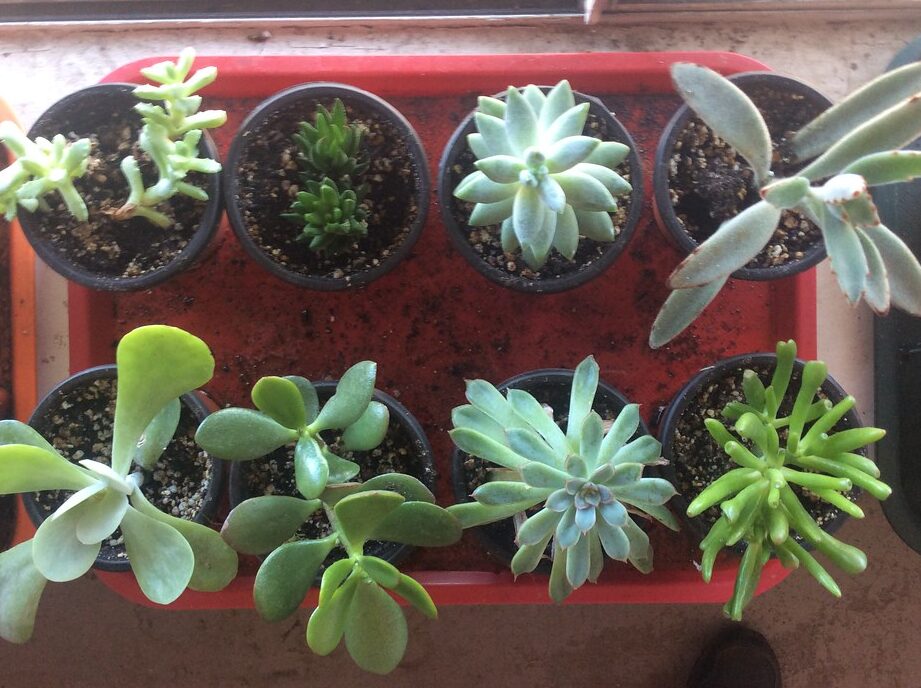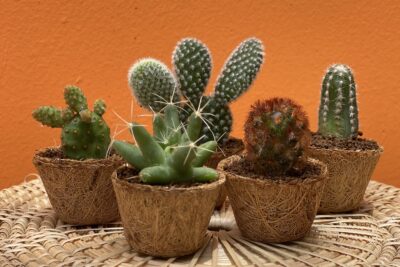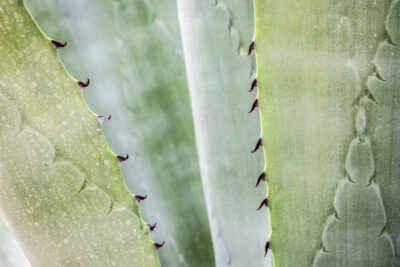
The Potential Risks of Repotting Succulents: Can It Harm or Kill Them?

Succulents have become incredibly popular in recent years, beloved for their unique shapes, vibrant colors, and ability to thrive in low-maintenance environments. These resilient plants are known for their ability to store water in their fleshy leaves and stems, making them ideal for busy plant lovers or those without a green thumb. While succulents are generally low-maintenance, one aspect of their care that can be a bit daunting is repotting. Many succulent owners wonder if repotting their plants can harm or even kill them. We will explore the potential risks of repotting succulents and provide tips on how to safely repot your beloved plants.
First, we will discuss the reasons why you may need to repot your succulents, such as when they outgrow their current container or when the soil becomes compacted. We will then delve into the potential risks involved in repotting, including root damage, transplant shock, and overwatering. Additionally, we will provide step-by-step instructions on how to repot your succulents safely, including choosing the right pot and soil, and how to properly handle the plant during the repotting process. By the end of this article, you will have a better understanding of the potential risks of repotting succulents and the necessary precautions to take to ensure the health and longevity of your plants.
- Choose the right size pot for your succulent to avoid overcrowding
- Use well-draining soil to prevent root rot
- Be careful not to damage the roots when removing the succulent from its current pot
- Allow the succulent to adjust to its new environment before watering
- Avoid overwatering to prevent root rot or fungal diseases
- Provide adequate sunlight to promote healthy growth
- Keep an eye out for signs of stress or disease and take appropriate action
- Research the specific care needs of your succulent to ensure proper care during repotting
- Frequently Asked Questions
Choose the right size pot for your succulent to avoid overcrowding
When it comes to repotting succulents, one of the most important factors to consider is choosing the right size pot. This is crucial to avoid overcrowding, which can lead to potential risks for your beloved plants.
Succulents are known for their ability to store water in their leaves and stems, making them resilient and adaptable. However, when placed in a pot that is too small, they may not have enough room to grow and thrive.
Overcrowding can lead to a variety of issues for succulents. Firstly, their roots may become tightly packed and tangled, restricting their ability to absorb water and nutrients from the soil. This can result in stunted growth and a weakened immune system, making them more susceptible to diseases and pests.
Additionally, overcrowding can cause the soil to retain moisture for longer periods, leading to root rot. Succulents are highly susceptible to root rot as they prefer well-draining soil. When the roots are constantly exposed to excess moisture, they can become waterlogged and start to rot, ultimately leading to the death of the plant.
 Why Did My Succulent Leaf Fall Off? Causes and Solutions
Why Did My Succulent Leaf Fall Off? Causes and SolutionsTherefore, it is crucial to choose a pot that provides enough space for your succulent to grow and allows for proper drainage. A general rule of thumb is to select a pot that is one size larger than the current one, allowing the roots to spread comfortably.
If you notice that your succulent has outgrown its current pot, it's important to repot it promptly to prevent any potential risks. Carefully remove the plant from its current container, gently loosen the roots, and place it in the new pot with fresh, well-draining soil.
Remember, providing your succulent with the right pot size is essential for its overall health and longevity. By avoiding overcrowding, you can help your succulent thrive and minimize the risks associated with repotting.
Use well-draining soil to prevent root rot
When repotting succulents, it is crucial to use well-draining soil to prevent the risk of root rot. Succulents, such as cacti and jade plants, have adapted to survive in arid environments where water is scarce. Their roots are not accustomed to sitting in overly moist soil for extended periods.
Using a well-draining soil mix ensures that excess water can easily escape from the pot, preventing waterlogged conditions that can lead to root rot. A well-draining soil allows the roots to receive the necessary moisture without becoming oversaturated.
One popular option for succulent soil is a mixture of potting soil, perlite, and coarse sand. Potting soil provides the necessary nutrients, while perlite and coarse sand improve drainage. The perlite helps create air pockets within the soil, allowing excess water to flow freely. Coarse sand, on the other hand, adds grittiness to the mix, promoting drainage.
 Mini Succulent Care: Best Practices for Healthy Growth
Mini Succulent Care: Best Practices for Healthy GrowthIt is important to note that regular garden soil or heavy clay-based soil should be avoided for succulents. These types of soil retain moisture for longer periods and can lead to root rot. Succulents thrive in dry, well-draining conditions, and using the right soil mix is essential to their overall health.
Be careful not to damage the roots when removing the succulent from its current pot
When it comes to repotting succulents, it's important to exercise caution to avoid damaging the delicate roots of these plants. The roots of succulents are particularly sensitive and can easily be harmed during the repotting process if not handled properly.
To ensure the safe removal of your succulent from its current pot, follow these steps:
- Prepare the new pot: Before attempting to repot your succulent, make sure you have a new pot ready. Choose a pot that is slightly larger than the current one, as succulents thrive in well-draining soil and need space to grow.
- Water the succulent: It's best to water your succulent a few days before repotting. This will help loosen the soil and make it easier to remove the plant without damaging the roots.
- Gently remove the succulent: Carefully turn the current pot upside down and tap the bottom to loosen the plant. Slowly and gently pull the succulent out of the pot, supporting the base of the plant and avoiding any tugging or jerking motions.
- Inspect the roots: Once the succulent is out of the pot, take a close look at its roots. Look for any signs of damage, such as broken or rotting roots. If you notice any issues, trim off the damaged parts with a clean and sharp pair of scissors or pruning shears.
- Prepare the new pot: Fill the new pot with a well-draining succulent soil mix. This type of soil will prevent water from sitting around the roots, reducing the risk of root rot. Create a small hole in the soil for the succulent to be placed.
- Replant the succulent: Carefully place the succulent in the new pot, making sure the roots are spread out and not cramped. Gently press the soil around the base of the plant to secure it in place.
- Avoid watering immediately: After repotting, it's best to avoid watering the succulent for a few days. This allows any damaged roots to heal and reduces the risk of overwatering, which can lead to root rot.
By following these steps and handling the repotting process with care, you can minimize the potential risks of damaging or killing your succulents. Remember, healthy roots are crucial for the overall well-being of your succulent, so it's essential to prioritize their protection during the repotting process.
Allow the succulent to adjust to its new environment before watering
When it comes to repotting succulents, it is important to allow the plant to adjust to its new environment before watering. This is because repotting can cause stress to the succulent, and watering immediately after repotting can further exacerbate this stress.
After repotting, the succulent may experience some root disturbance and damage. Watering the plant immediately can lead to overhydration and potential root rot. It is best to give the succulent some time to recover and settle into its new potting mix before introducing any moisture.
 What Happens to Succulents After They Bloom?
What Happens to Succulents After They Bloom?Typically, it is recommended to wait at least one week after repotting before watering the succulent. This timeframe allows the roots to heal and adjust to their new surroundings. During this period, it is important to monitor the plant closely for any signs of stress or dehydration.
If the succulent appears to be healthy and shows no signs of distress after the one-week waiting period, you can gradually introduce watering. Start with a small amount of water and observe how the plant responds. If it absorbs the water well and shows signs of growth, you can continue with regular watering intervals.
However, if the succulent shows signs of stress, such as wilting leaves or mushy stems, it is crucial to reassess the watering strategy. In such cases, it is best to wait a little longer before watering or adjust the amount of water given to prevent further harm to the plant.
Remember, succulents are adapted to survive in arid conditions and can withstand periods of drought. Overwatering is one of the most common causes of succulent death, so it is important to be cautious when watering your newly repotted succulent.
Avoid overwatering to prevent root rot or fungal diseases
When it comes to repotting succulents, one of the potential risks that you need to be aware of is overwatering. Succulents are known for their ability to store water in their leaves and stems, making them highly adapted to arid conditions. However, when they are overwatered, their roots can become susceptible to rot or fungal diseases.
Root rot is a common problem that can occur when succulents are overwatered. Excessive moisture in the soil can lead to the roots becoming waterlogged, causing them to rot. This can be detrimental to the overall health of the plant and may eventually lead to its death if not addressed promptly.
 Caring for an Angel Wing Succulent: Essential Tips and Advice
Caring for an Angel Wing Succulent: Essential Tips and AdviceFungal diseases can also pose a threat to succulents that are overwatered. The excess moisture creates a favorable environment for fungal growth, which can attack the roots and other parts of the plant. Common fungal diseases that succulents may be susceptible to include powdery mildew, root rot fungi, and black spot.
To avoid these potential risks, it is important to have a proper understanding of your succulent's watering needs. Succulents generally prefer dry soil and should only be watered when the top inch of soil is completely dry. When repotting a succulent, ensure that the new soil is well-draining to prevent excessive moisture from accumulating around the roots.
Additionally, it is essential to choose an appropriate pot size when repotting succulents. A pot that is too large can retain excess moisture, increasing the risk of overwatering. On the other hand, a pot that is too small may restrict root growth and lead to overcrowding, which can also negatively impact the plant's health.
To summarize, overwatering can be a potential risk when repotting succulents. It can cause root rot and make the plant more vulnerable to fungal diseases. By understanding your succulent's watering needs, choosing a well-draining soil and an appropriate pot size, you can minimize these risks and ensure the long-term health of your succulents.
Provide adequate sunlight to promote healthy growth
When it comes to succulents, sunlight is essential for their overall health and growth. These plants thrive in bright, indirect light, so it's crucial to provide them with an adequate amount of sunlight.
Exposure to sunlight helps succulents produce energy through photosynthesis, which is vital for their survival. It also helps maintain their vibrant colors and compact form.
However, it's important to strike a balance when it comes to sunlight exposure. While succulents love sunlight, excessive exposure to intense, direct sunlight can lead to sunburn and damage their delicate leaves. This can result in discoloration, browning, or even death of the plant.
 Common Causes and Solutions: Why Your Succulent Died
Common Causes and Solutions: Why Your Succulent DiedTips for providing adequate sunlight:
- Place your succulents in a spot where they can receive bright, indirect sunlight for at least six hours a day. South-facing windows are usually ideal for this purpose.
- If you notice signs of sunburn, such as brown or white patches on the leaves, gradually move the plant to a shadier location to prevent further damage.
- Consider using sheer curtains or blinds to filter the sunlight if your succulents are exposed to intense, direct sunlight.
- During the summer months, it's advisable to provide some shade during the hottest part of the day to protect your succulents from scorching heat.
By providing your succulents with adequate sunlight, you can ensure they receive the necessary energy for healthy growth without risking sunburn or damage.
Sunlight is crucial for the overall health and growth of succulents. However, it's important to strike a balance and avoid excessive exposure to intense, direct sunlight. By following the tips mentioned above, you can provide your succulents with the right amount of sunlight to promote healthy growth without risking harm or death.
Keep an eye out for signs of stress or disease and take appropriate action
Repotting succulents can be a beneficial practice for their overall health and growth. However, it is important to be aware of the potential risks involved in this process. While repotting can provide a fresh start for your succulents, it can also cause stress or even harm them if not done correctly.
1. Root Damage
One of the main risks associated with repotting succulents is the potential for root damage. Succulents have delicate root systems that are susceptible to injury. When removing the plant from its current pot, it is crucial to handle it with care and avoid damaging the roots. Tugging or pulling too forcefully can lead to root breakage, which can hinder the succulent's ability to absorb water and nutrients.
2. Transplant Shock
Transplant shock is another concern when repotting succulents. This occurs when the plant experiences stress or trauma during the repotting process, leading to a temporary decline in health. Symptoms of transplant shock include wilting, yellowing leaves, or stunted growth. To minimize the risk of transplant shock, it is essential to ensure that the new pot provides adequate drainage and that the succulent is not overwatered immediately after repotting.
 Can Succulents Thrive when Transplanted Outdoors?
Can Succulents Thrive when Transplanted Outdoors?3. Disease Introduction
When repotting succulents, there is a possibility of introducing diseases or pests to the plant. If the new pot or soil is contaminated, it can lead to the spread of harmful pathogens. To mitigate this risk, always use fresh potting soil specifically formulated for succulents and sterilize any tools or containers used in the repotting process. Additionally, inspect the succulent for any signs of disease before repotting, as treating an infected plant can be challenging.
4. Overwatering
Overwatering is a common mistake that can harm succulents during the repotting process. Succulents are adapted to survive in arid environments and are susceptible to root rot if they are consistently exposed to excessive moisture. When repotting, it is crucial to use well-draining soil and allow the plant to dry out completely between waterings. Avoid the temptation to water the succulent immediately after repotting, as this can increase the risk of overwatering.
While repotting succulents can have its risks, it is important to remember that these plants are resilient and can often recover from minor setbacks. By being mindful of the potential hazards and taking appropriate precautions, you can successfully repot your succulents without causing harm or death to these beautiful and fascinating plants.
Research the specific care needs of your succulent to ensure proper care during repotting
When it comes to repotting succulents, it is crucial to research the specific care needs of your plant beforehand. Succulents come in various species, each with its unique requirements for sunlight, water, and soil. Understanding these needs will help you ensure that you provide the appropriate care during the repotting process.
1. Assess the current condition of your succulent
Before you begin repotting, carefully examine your succulent to determine its overall health. Look for signs of overgrown roots, such as roots growing out of the drainage holes or circling around the pot. If you notice any signs of root rot or pest infestation, it is important to address these issues before repotting.
 Morning Care: Essential Tips for Maintaining the Beauty of Succulents
Morning Care: Essential Tips for Maintaining the Beauty of Succulents2. Choose the right pot and soil
When selecting a new pot for your succulent, consider the size and drainage capabilities. Succulents prefer pots with drainage holes to prevent waterlogged soil, which can lead to root rot. Additionally, choose a pot that provides enough space for the roots to grow comfortably.
For the soil, opt for a well-draining mix specifically formulated for succulents. These mixes usually contain a combination of potting soil, sand, and perlite or pumice to promote proper drainage and prevent excess moisture retention.
3. Handle with care during repotting
When it's time to repot your succulent, gently remove it from its current container by carefully loosening the soil around the edges. Be cautious not to damage the roots or break any stems or leaves. If the roots have become tightly bound, you can carefully tease them apart to encourage healthy growth.
Place the succulent in the new pot and fill the spaces around it with the well-draining soil mix. Gently press the soil to secure the plant in place, being careful not to bury the leaves or stem too deeply.
4. Allow for a period of adjustment
 Trimming Succulent Stems: How to Prune Without Harming the Plant
Trimming Succulent Stems: How to Prune Without Harming the PlantAfter repotting, it is essential to give your succulent some time to adjust to its new environment. Avoid watering it immediately after repotting to prevent overwatering. Instead, wait for a few days or until the soil has completely dried out before watering the plant.
Monitor your succulent closely during this adjustment period, keeping an eye out for any signs of stress or potential issues. Adjust your watering schedule and sunlight exposure accordingly, based on the specific care needs of your succulent species.
By taking the time to research and understand the care requirements of your succulent, you can minimize the potential risks associated with repotting. With proper preparation and gentle handling, repotting can be a beneficial process for the growth and overall health of your succulent.
Frequently Asked Questions
1. Should I repot my succulents?
Repotting succulents is generally recommended every 1-2 years to provide fresh soil and space for growth.
2. What are the potential risks of repotting succulents?
Potential risks include damaging the roots, causing root rot from overwatering, or transplant shock which can stress the plant.
3. Can repotting harm or kill my succulents?
If done improperly, repotting can harm or even kill succulents. It is important to follow proper repotting techniques and avoid overwatering.
4. How can I minimize the risks of repotting succulents?
To minimize risks, choose a well-draining soil and pot, allow the plant to dry out before repotting, and handle the roots with care during the process.
 Caring for Glow in the Dark Succulents: A Home Gardener's Guide
Caring for Glow in the Dark Succulents: A Home Gardener's GuideIf you want to read more articles similar to The Potential Risks of Repotting Succulents: Can It Harm or Kill Them?, you can visit the Care and Maintenance category.






You Must Read